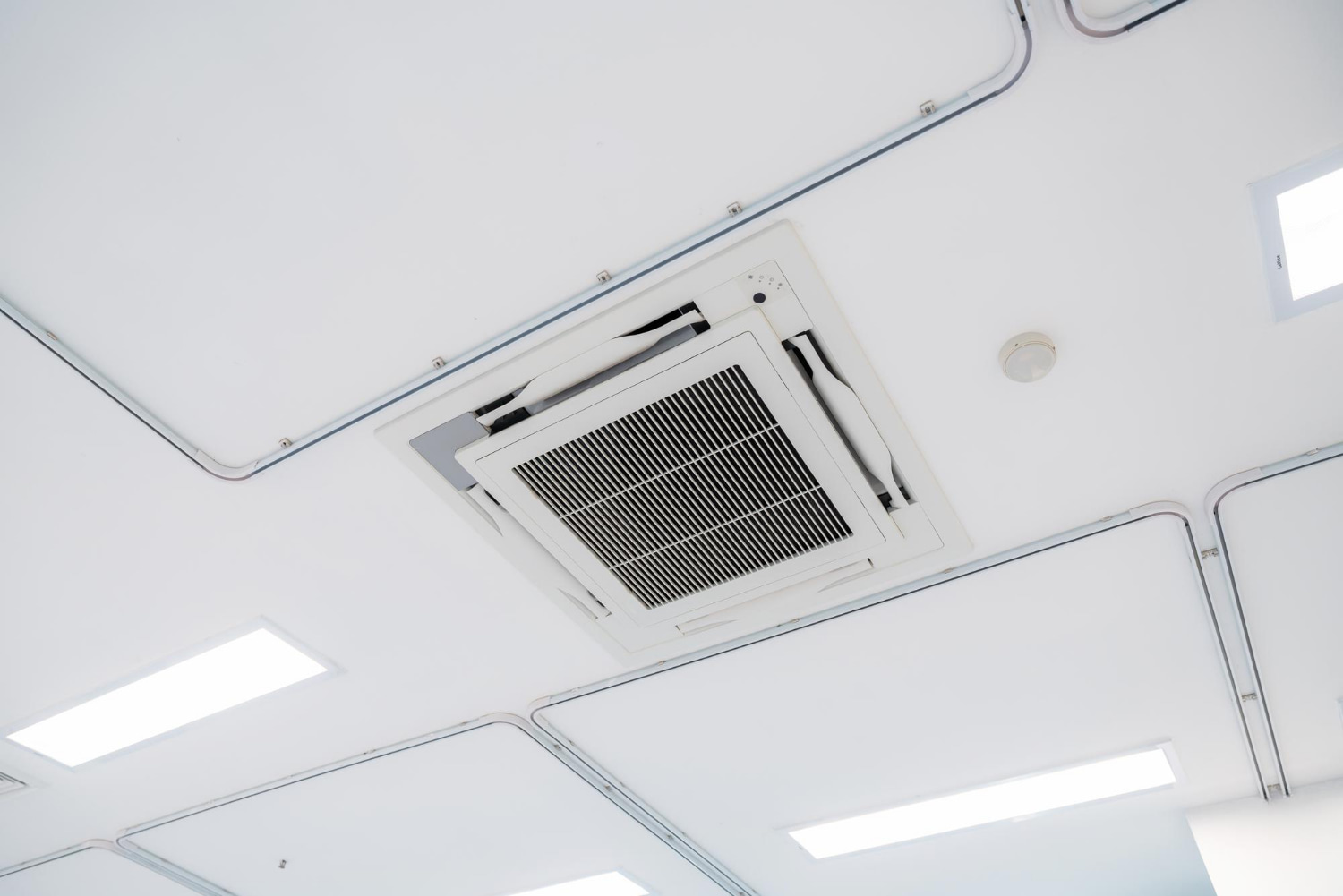Schools are places where hundreds, and sometimes even thousands, of students are together. In these areas, ventilation is extremely important for human health. Particularly in environments with much younger children, such as kindergartens, and in areas like gymnasiums and playrooms, the importance of ventilation is even greater.

Schools are among the top places where viral diseases spread the most during the winter months. The lower resistance of children’s bodies, the presence of many students in small areas, and several other reasons all create a conducive environment for the spread of viral infections. To prevent this, a properly designed ventilation system must be installed within the school.
The fact that educational institutions such as kindergartens, elementary schools, high schools, and universities, which house hundreds of students, lack proper ventilation is a serious health hazard. An airless, damp environment will lead to the emergence of many harmful viral and bacterial diseases. This results in the continuous spread of diseases transmitted through the respiratory tract. Therefore, it is crucial for the health of students and educators that schools are equipped with adequate ventilation systems.
In addition, special education institutions should pay special attention to their climate control systems. No parent would send their child to a school with an inadequate ventilation system. Not only does a lack of proper ventilation cause serious health risks, but it is also crucial for attracting more students.
Ventilation ducts must also be sufficient in common areas within schools such as gymnasiums, locker rooms, playrooms, dormitories, cafeterias, dining halls, and libraries. It is particularly crucial to keep the air fresh continuously in places like bathrooms that have a higher health risk potential. Besides these, avoiding humidity and extending the building’s lifespan are also important reasons why ventilation systems are essential. Due to these reasons, a sufficient ventilation system should be designed and implemented without delay.
School ventilation systems and Schools roof fan system have many different ducts and filter types, each with its own unique features. To ensure that the air exchange process continues without any interruptions for a long period and that the environment is consistently replenished with fresh air, the right ventilation system must be selected. Each school and school section should choose a ventilation system that suits its specific needs.
One of the most critical parts of school ventilation are the toilets. In these high-risk areas, air exchange should occur at least five times per hour to ensure that there is always clean air inside. The ducts that supply air to the classrooms and other sections should be kept separate from those supplying fresh air to the toilets. This separation prevents the transfer of unpleasant odors from the toilets to the classrooms when the ventilation system is not running.
Ventilation is extremely important in areas such as chemistry laboratories. Exhaust ventilation using hoods should be done over experimental setups in these types of laboratories. Additionally, clean air should be introduced at points close to the ground. This ensures that harmful gases released during experiments are expelled outside before being inhaled by students.
The need for ventilation in conference rooms within schools is a significant issue. These areas require heating with hot air or air conditioning systems. Heating needs are met by radiators for 50 to 75 percent of the requirement. The air requirement is 30 cubic meters per person per hour.
Young children have much weaker immune systems compared to adults, which significantly increases their risk of contracting and spreading viral infections. Therefore, it is crucial that areas like kindergartens, preschools, and nurseries where young children spend many hours, have adequate ventilation systems. Besides viral infections, dust present in these areas also poses significant health risks. While natural ventilation works to some extent, it is largely insufficient.
Unfiltered air from outside can be dangerous for children. Additionally, these spaces require air conditioning systems to keep the indoor temperature consistent and the air fresh continuously. Exhaust systems can easily remove contaminated air accumulated in corridors. Moreover, to protect against airborne diseases, bag filters and pre-filter systems should be used. Exhaust systems used in toilets, kitchens, and bathrooms should be independent of the main ventilation. In areas where installing a ventilation system is not feasible, devices that continuously purify the air should be placed. This ensures that the air inside is constantly cleaned through active carbon filters.
When selecting a school ventilation system, the first important detail to consider is the wide variety of ducts and filters available. This allows for the installation of different and better systems tailored to each environment. Deciding on these systems alone can be quite difficult. Therefore, you can gather suitable suggestions by discussing your needs with experts.
At ERF Group, we design ventilation systems appropriate for various sections of your school, regardless of the type. Contact us now to learn about the suitable ventilation systems for your school and take advantage of our competitive offers.